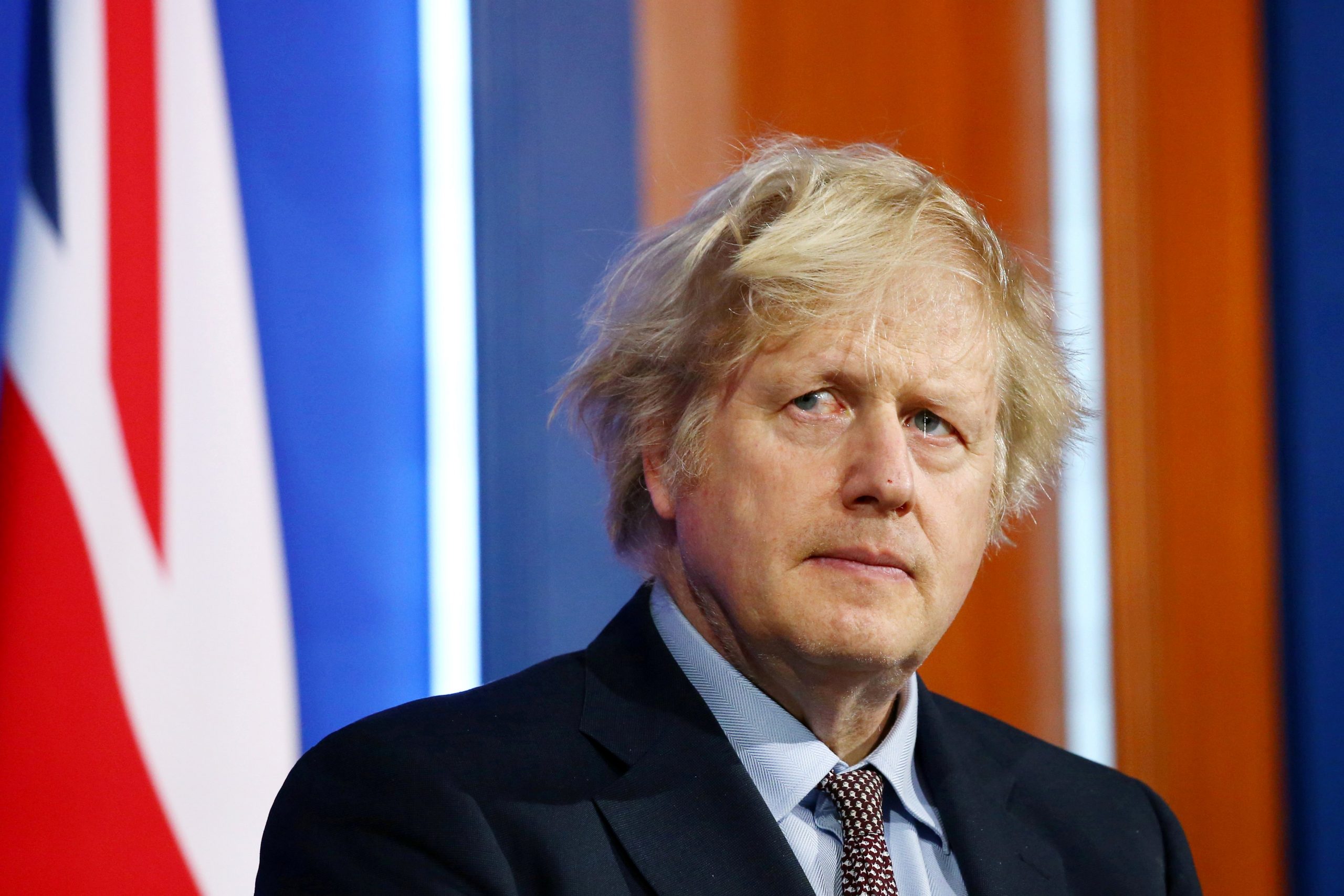Boris Johnson today told reporters that Covid is “still a very dangerous disease” as he encouraged people to stick with self-isolation when ‘pinged’. “Don’t forget, we will be coming forward with a new system from August 16th,” he said during a visit to Surrey Police HQ in Guildford. “Until then please everyone, stick with the programme.”
He also warned against drawing “premature conclusions” from the dropping coronavirus case numbers, saying:
I’ve noticed, obviously, that we are six days in to some better figures. But it is very, very important that we don’t allow ourselves to run away with premature conclusions about this. Step Four of the opening-up only took place a few days ago, people have got to remain very cautious and that remains the approach of the Government.
The PM’s remarks may be little more than prudent caution, but describing Covid as “still a very dangerous disease” doesn’t tally with the fatality rate, always very low for most of the population at below 0.1%, and now apparently reduced further including for those at higher risk by the vaccination programme. Does Boris not believe the vaccines are effective? If he doesn’t, what was the point of them? The Government needs to sort out its messaging on this.
Beyond messaging, though, why is the Government continuing with plans for Test and Trace beyond August 16th? When do they plan to accept that the crisis is over and cease all emergency public health measures and return us to the way things were in February 2020?
It’s all very well warning about “premature conclusions” but there’s nothing premature about pointing out that the fast drop in reported positive cases in the past nine days (down over 50%) was not predicted by any Government scientists or their models. Even if it doesn’t continue (though it looks like it may, as it has in Scotland) it points to serious problems with their model assumptions about how this virus spreads and who is susceptible.
Sceptics who have been following the data and scientific studies will not be surprised by the fall in infections despite the lifting of restrictions, as there is no evidence that imposing restrictions is necessary to end a Covid epidemic and no evidence that lifting restrictions triggers an ‘exit wave’, which occurred neither in the U.K. last summer nor in the U.S. this spring. Government ministers and scientists, however, may be slower to accept the implication of herd immunity (at least for this season and variant) that the latest fall implies.
Not, though, it seems Professor Neil Ferguson, who was on BBC Radio 4’s Today programme today, backtracking on his claims on July 18th that it was “almost inevitable” that daily cases would climb to 100,000 and distinctly possible they would hit 200,000, giving us a “difficult summer”. Now, apparently, “the equation has fundamentally changed”.
We need to remain cautious, especially with the potential increase in contact rates again as the weather becomes less fine and schools return. We’re not completely out of the woods, but the equation has fundamentally changed. The effect of vaccines is hugely reducing the risk of hospitalisations and death. And I’m positive that by late September or October time we will be looking back at most of the pandemic. We will have Covid with us, we will still have people dying from Covid, but we’ll have put the bulk of the pandemic behind us.
Okay, it’s still a pretty cautious statement, and why wait till October when cases are plummeting now despite ending restrictions? But it’s the first sign of a new tune from the SAGE gloomsters. If the PM won’t listen to us sceptics, even though we’re increasingly being vindicated by events, will he listen to his failed advisers as they change their tune?













To join in with the discussion please make a donation to The Daily Sceptic.
Profanity and abuse will be removed and may lead to a permanent ban.
Yes. To be fair, the garden thermometer reading during the recent hot spell (“40C”) was 94 degrees, compared to, as I remember, a previous highest of around 90 degrees over the past few decades. All irrelevant anyway, what is needed is a proper accurate cost-benefit analysis for governments trying to change the climate (and for that matter how likely they actually are in the real world to essentially leave wealth in the ground when hard times come and people are feeling the pinch).
By the way, does anyone know how much influence (if any) the solar flare at the time of the “40C” reading had (and what value readings from next to busy airfields have for that matter)?
The vast majority of models show enhanced warming over the Arctic, but closer to twice the global average. This is true regardless of whether the forcings fed into the models are natural or the supposed effect of carbon dioxide. I assume that the opposite is also true and if we are entering a period of global cooling the Arctic will cool faster than the rest of the globe meaning that any cooling trend will become obvious in Arctic temperatures before it shows up in global data sets.
Just enjoyed a very pleasant evening on our patio (ak agin palace) after a hottish day. Nothing unique as far as I can recall (born 1949).
A major work Arctic Ice was published in 1940, by the Russian oceanographer N. N. Zhubov. It reads in places like an abstract of the modern Arctic-ice alarm. Arctic temperatures in the 1920s and 1930s rose at unprecedented rates. Vast areas that once were ice-bound had become navigable. Fish species never before seen so far north were now commonly brought up in the nets of arctic fishermen. The general winter temperatures were several degrees higher than the maxima of previous decades.
Not too bad for Greenland ice sheet either despite the doom-mongering http://nsidc.org/greenland-today/